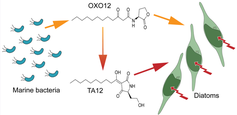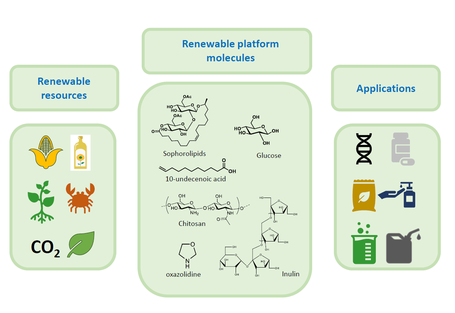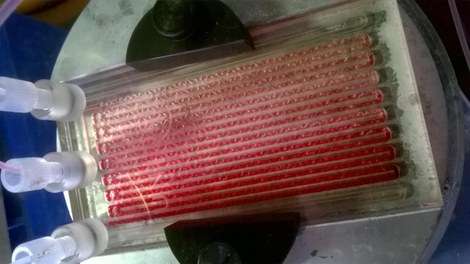Research
Within the framework of organic and bioorganic chemistry, the following research lines are elaborated in our group:
The chemistry of small-ring azaheterocycles
This research involves the study of regio- and stereoselective ring transformations of constrained (phosphonylated) azaheterocycles such as aziridines, azetidines and beta-lactams.
Next to the fundamental aspect of designing and evaluating new synthetic methods, the application of these techniques is also employed for the construction of a broad variety of heterocyclic target compounds with biological interest (diversity-oriented approach).
Synthesis of bioactive substances

All these studies are performed in collaboration with national and international academic and industrial partners specialized in the assessment of these specific bioactivities.
Green chemistry and renewable resources
Renewable chemicals and materials are currently a hot topic in research and industry. The depletion of fossil resources and the exhaust of greenhouse gases force us to think about alternative sources for the chemical industry and the energy sector..
Our research group focuses on the modification of non-fossil resources towards renewable chemicals, such as the modicification of biopolymers (inulin, chitosan), the use of 10-
undecenoic acid (derived from castor oil) and the production of biofuels and renewable fuel additives.
Other projects within the field of green chemistry involve the use of enzymes (biocatalysis) in organic chemistry and the development of the greenhouse gas CO2 for the preparation of medicinally relevant building blocks (such as oxazolidinones).
Microreactor technology
Microreactor technology (MRT) provides a number of specific advantages compared to batch processes: it is often more selective and efficient, has a better mass and heat transfer capacity, consumes often less reagents and solvents, has good safety features and allows to work with very reactive and/or toxic reagents.
The SynBioC research group is active in the application of microreactor technology for multicomponent reactions, reactions using dangerous reagents, fotochemical and low temperature reactions.
Furthermore, several reaction procedures are optimized in collaboration with industrial partners. The group has a range of different microreactors so that different systems can be applied and evaluated for each type of reaction.
Diverse topics in organic chemistry
A number of other projects in the field of organic chemistry are related to specific collaborations. Examples include
- the synthesis of azaheterocycle-based as new ligands for lanthanide MOFs (with applications in displays, optical data transfer systems, lasers)
- theoretical rationalizations of reaction pathways and solvent effects (CMM, UGent)
- isolation and structure elucidation of complex (biological) compounds
For more detailed information on the research of the SynBioC Research Group, please visit our list of publications or contact one of the staff members.


